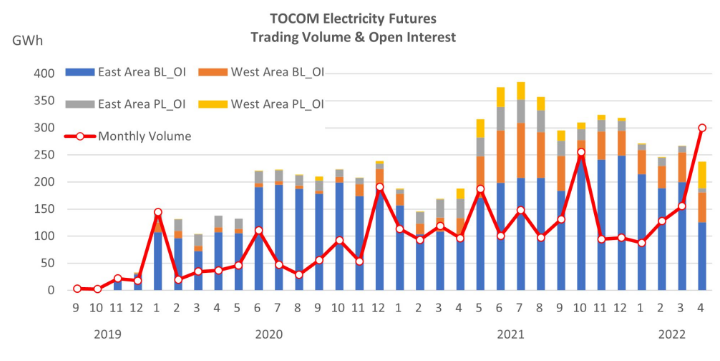TOCOM Energy
JPX Energy Market Updates(Oct. 31, 2022)
Welcome back to JPX energy market updates.
Oil prices have trended higher during the second part of last week. Prices eased back from recent gains Friday and Monday as China imposed Covid restrictions on a growing number of cities, but benchmark prices were still looking at weekly increases of 3%.
The bullish price action was fueled by a number of factors including optimism over record U.S. crude exports, signs that recession fears are fading and a weaker U.S. Dollar. Longer-term traders also noted that the start of OPEC+ production cuts and the European Union’s embargo on Russian crude oil were also underpinning fundamentals. This is reflected in a more steep backwardation structure at the front part of the future curve. Intermonth spreads continued to improve with the key January and March spread of JPX Dubai contract up $0.80/b to $4.10/b.
U.S. crude oil stockpiles rose in the most recent week, crude inventories rose by 2.6 million barrels in the week to Oct 21 to 439.9 million barrels, nearly triple analysts’ forecasts in a Reuters poll for a 1-million-barrel rise.
The big surprise that drove prices higher, however, was the news that crude exports surged to a weekly record of 5.1 million barrels per day, cutting net crude imports to just over 1 million bpd, also a record. Crude oil was also underpinned after the latest U.S. GDP report showed some signs that inflationary pressures could be easing. The report for U.S. GDP showed 2.6% economic growth in the third quarter.
On the supply side, Russia’s finance ministry has slashed its forecast for taxable oil production for next year, a draft budget seen by Reuters showed on Friday.
The draft budget covers the next three years and forecasts a decline in crude oil production and refining as Western sanctions bite. The finance ministry sees Russian oil and gas condensate production at 490 million tonnes next year, or 9.84 million bpd. This is a 7% - 8% decline from the 10.54 million bpd to 10.64 million bpd that the ministry anticipated this year. After the drop off to 490 million tonnes next year, the finance ministry expects oil production to increase to 500 million tonnes for 2024 and 2025.
Oil refining and export volumes that are subject to tax have been revised downward to 8.20 million bpd next year, from the previously expected 10.15 million bpd. Of this, expected oil refining volumes were cut by nearly 20% to 230 million tonnes, while oil exports subject to exports duty were revised down 19.4%.
So far, Russian oil production, the third-largest after the United States and Saudi Arabia, has been resilient to sanctions, buoyed by rising sales to China and India.
However, uncertainty surrounding the impact of the western ban and implementation of a price cap on Russian oil from Dec. 5 are giving pause to China and India's appetite for Russian crude oil. Refiners and crude buyers from both these key Asian markets for Russian oil are unsure as to what to expect post Dec. 5 and this was reflected in the little to no trade information heard for December-loading Far East Russian barrels, the crude oil market in Asia typically trades two months ahead of the loading cycle, which sees buyers and sellers in Asia trading December-loading barrels in October.
Another near-term uncertainty for the oil market comes from the policy uncertainty brought about by the midterm elections in the United States as US House Republicans will launch an investigation into what they say could be the "potential misuse" by the Biden administration of the nation's emergency oil reserves to lower gasoline prices, as well as White House considerations over a fuel-export ban.
However, the event this week which could have the biggest impact on the oil market is the FOMC meeting. Expectations are that the Fed will hike interest rates by 75bps. However, the market will also be eager for any signals on what the Fed could do at its December meeting. There is a growing expectation that the Fed could slow the pace of hikes In December. Any hints from the Fed of a slowing in the pace of hikes would likely provide some support to risk assets, including the oil markets.






